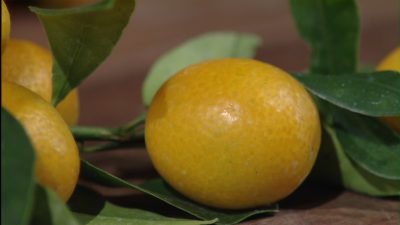Citrus Plants List

Monte Nesbitt
Texas AgriLife Extension, A&M
Mainstream (edible/popular) citrus cannot be grown north of I-10 without regard for freeze protection. Even areas south of I-10 will be challenged in many winters. The pattern of severe winter freezes is quite unpredictable and it is possible to go through several successive winter seasons, grow citrus plants to appreciable size, and then encounter a severely damaging or killing freeze event.
Early fruit maturity (October-December) is important in cold climates like central Texas, because fruit is damaged at temperatures of 28 F on all citrus. The earliest maturing citrus fruits are satsumas, tangerines, other mandarins, and some sweet oranges.
Most cold hardy
- Satsuma mandarin (Citrus inshiu)
- Kumquat
- Calamondin
- Changsa tangerine (palatability questionable)
- These will survive mid-teens, possibly lower if the freeze event occurs when plants are fully acclimated (January at the earliest, depending on the year).
Plants that will be severely damaged in the 23-28 range:
- Limes
- Meyer or Valley Lemon (not a true lemon)
- Citrons
Many types of freeze injury will be seen in 2011 after hard freezes, from completely dead to only leaf damage. Full extent of damage sometimes takes well into the spring after warm temperatures commence and the tree is trying to regrow.
Pruning does not help rescue or lessen damage to the plant, and pruning too soon may expose the tree to more damage in a later frost or freeze event. So, delay pruning; And be on guard against a late spring frost if trees are actively growing.
Freeze injury and loss of foliage may impair a tree’s ability to set a good crop of fruit. Fertilize conservatively in early spring and wait until the fruit drop period is passed to assess cropload and adjust fertilizer. A plant that is growing only vegetation this year will need less fertilizer than one that is bearing fruit.
Conversely, if trees have had extensive freeze damage to limbs, fertilizing will help regrow the tree. Citrus plants consume a lot of nitrogen. A 10-year-old tree can actually use 10 pounds of a 10-10-10 fertilizer?over several applications throughout the season. Adjust amounts for smaller trees and water in well. Keep trees watered for best performance.
Commercially propagated citrus are grown on a rootstock. Not all rootstocks are suited to all types of soils in Texas. Trifoliate orange is the most cold hardy rootstock, but it does not grow well in high pH soils. For alkaline soils, you want sour orange as the rootstock. Know your soil; know what rootstock you have.
Serious threats: Texas has quarantines in place that prevent importing plants from outside the state. This is to prevent introduction of Citrus Greening, a devastating problem that we hard working hard to educate folks on. It is spread by the Asian Citrus Psyllid, which is present in Texas, although no psyllids have been found in the state that are infected.
But that could change, and my position is that psyllids should be controlled, because they represent some risk of disease spread and they will damage the foliage of the plant they colonize and feed on.
In home landscape settings, psyllids can be controlled with oil and soap sprays.
Citrus tree owners should be vigilant for suspicious signs of CG infection, including blotchy leaf mottling, etc. If such is found or suspected, they can call TDA (800 TELL TDA) for help in getting the tree tested.
Get more information about Citrus Greening, along with photographs on TAMU’s website.
categories:
tags:
related:








 Monte Nesbitt
Monte Nesbitt